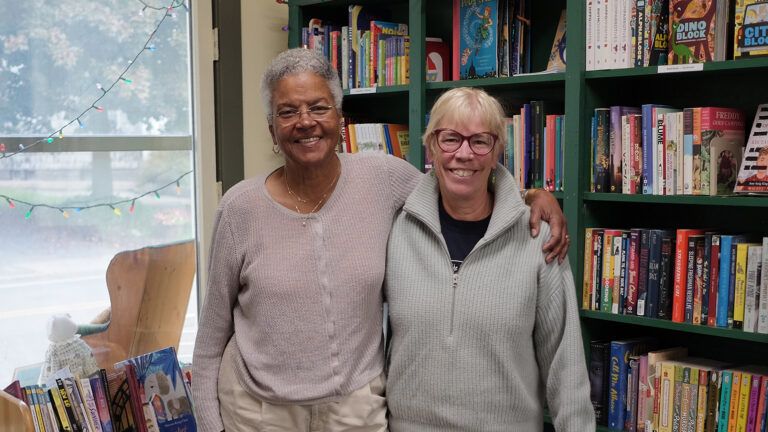Do miracles really happen? That’s the question three ordinary women set out to answer in their not-so-ordinary book, The Miracle Chase. The book contains enough facts, history and real-life stories to sway even the most hardened skeptic.
But The Miracle Chase is more than a book about miracles. You might say the book itself is a kind of miracle. Because if it hadn't been for a series of startling events, The Miracle Chase might never have been written at all…
The story begins at a local café in a small suburban town east of San Francisco. Joan Hill, Katie Mahon and Meb Phillips were three moms getting together while their kids were at school.
The meeting was Joan’s idea. She knew Katie and Meb through school and sports and was convinced her two friends would hit it off.
Joan’s hunch was proved right as the three women sat with their coffee in the sunlit café. Conversation flowed easily until Katie asked an innocent-seeming question: "Joan, how are you? I mean, really–how are you?”
Joan put down her coffee. She knew what Katie was asking about. A few weeks earlier, Joan’s 14-year-old son, David, had survived emergency open-heart surgery. The result of a congenital heart defect.
Joan struggled with her answer. At last she said, “David’s doing great. The doctors say he’ll be back on the swim team in no time. But me…” She trailed off.
And then she told a story. David, she said, shouldn’t be alive at all. “It was like a whole series of, well, coincidences that saved him.”
Like, Joan just happened to be volunteering at school the day David had chest pains. Then the right doctors were available to see him. The surgeon warned Joan and David’s father that, because of the configuration of David’s heart, which he’d studied in pre-op scans, he wouldn’t be able to fully fix the problem.
But during the operation, David’s heart turned out to be completely different from the scans. The surprised surgeon was able to fully address the problem.
“I’m so grateful,” said Joan. “But… I just don’t know how to explain it.”
Before anyone else could reply, Meb spoke up. “Actually, I have a story too,” she said in a quiet voice. The other women leaned closer.
Meb told how, 16 years earlier, she’d made a fateful decision. She was a graduate student at the time, and she needed a babysitter for her six-month-old daughter, Elizabeth. The family’s regular sitter wasn’t available, so Meb took up her neighbor’s offer to leave Elizabeth with the neighbor’s nanny.
“When I got back from class,” Meb said, “Elizabeth wasn’t at my neighbor’s house. My neighbor was there. She said Elizabeth had ‘a little accident’ and was at the hospital.”
Meb and her husband found Elizabeth in the intensive care unit. Her tiny body was enveloped by tubes and wires. She was in a coma. Her right side was paralyzed. She was having seizures.
“It was a nightmare,” Meb said. “Our neighbor refused to tell us what happened, and we couldn’t leave Elizabeth’s side to get answers. Day after day went by and Elizabeth never seemed to get better.”
Meb paused. “Late one night, I was holding Elizabeth, feeding her some pumped breast milk through a bottle she was just barely able to use. The room was quiet and dim. I started praying and before I knew it I was just sobbing and begging God for help.
“All of a sudden I felt a hand on my shoulder. I looked up and saw this compassionate man staring down at me. He smiled and said, ‘Have faith, Mrs. Phillips. Your daughter has shaken baby syndrome. It can be catastrophic. But your daughter is going to live. She will be all right.’
“And then he walked away. The minute he left it was like I felt the life come back into Elizabeth. A few days later we took her home. You know how Elizabeth is today–a healthy honors student who doesn’t let her blindness stop her from doing anything. But I never saw that man again. I have no idea who he was.”
Meb had since become an advocate for abused children and helped to start a website that enables parents to do background checks on caregivers.
By this point the women were on the edge of their seats. It came as no surprise when Katie tentatively said that she too had a story–one in which her own life had been in great danger.
It was years ago, she said, back in college. She was walking in San Francisco when a young, handsome, nicely dressed man politely asked if she would mind helping him make a phone call. He said he was visually impaired and needed help reading the phone book.
The man seemed normal, even helpless, so Katie took pity. But when they got to the phone booth, in a deserted mezzanine in a nearby hotel, the man’s expression suddenly changed and he lunged for Katie. His face became the unforgettable mask of evil.
“At that exact moment a bellhop came in and said to me in a loud voice, ‘Don’t you think you should be going now?’ And he led me out of the room. I ran from the hotel. I never saw the bellhop again.”
Katie paused.
“Several years later, I opened the newspaper and saw a story about the execution of a serial killer named Ted Bundy. I almost fell over. The face staring back at me from that newspaper was the face of the man who’d led me to the phone booth. He used similar scams to lure other women into his trap. If it hadn’t been for that bellhop…”
The three friends had no explanation for their extraordinary stories that morning. But they knew one thing. It had to be more than coincidence that they were all in that café together, sharing their mysterious brushes with fate.
They set themselves a goal. They’d find out as much as they could about miracles and write a book about what they learned. Such a book, they thought, might help others think about and share the miracles and mysteries in their own lives.
They agreed to divide up the work. Joan would research history. As she put it, “What did the old wise guys say about miracles?” Katie, the skeptic, would tackle the science. Is there proof that miracles exist? Meb would study the different forms of what people call miracles and come up with a definition.
Twice a week they met at Joan’s house. Over coffee and sandwiches, they presented their findings using charts and graphs. As the women discovered in their research, almost everyone has his or her own miracle story.
“If you have a miracle story, you have an obligation to report it.” Katie came across those words in her college alumni magazine while she was working on the book. It became a motto for the three friends’ work. Because the most important thing they discovered is that miracles are never over.
They go on spreading goodness in the world as long as people keep hearing about them and being changed by them. Like the three stories that started The Miracle Chase. Maybe even yours.
Download your FREE ebook, Mysterious Ways: 9 Inspiring Stories that Show Evidence of God's Love and God's Grace





